Why the Jungfrau Region is the sustainable star of Swiss Alps
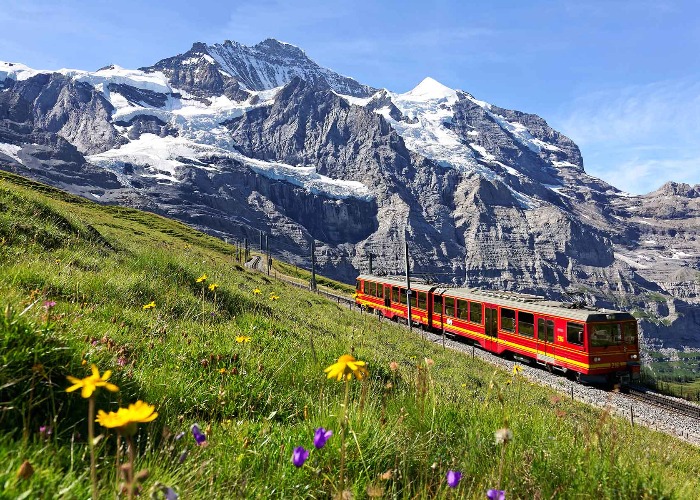
How to explore this stunning place, the eco-friendly way.
Arrive in the Jungfrau Region by train in winter and you’re immediately bombarded by views of glacier-encrusted peaks, frozen waterfalls tumbling over cliff faces and log chalets. In summer, wild flowers and lush grasses blanket the ground. These obscenely lovely landscapes sent Goethe, Tolkien and Lord Byron into romantic raptures but with the snow levels rapidly rising, glaciers shrinking and the climate crisis taking its toll, the region is seriously upping its environmental game to protect them.
Bang in the heart of Switzerland’s Bernese Alps, this is where Mother Nature pulled out all the scenic stops, with the big mountain three of Eiger (Ogre), Mönch (Monk) and Jungfrau (Virgin) hovering around the 13,000 feet (4,000m) mark. It’s gorgeous - and the aim is to keep it that way.
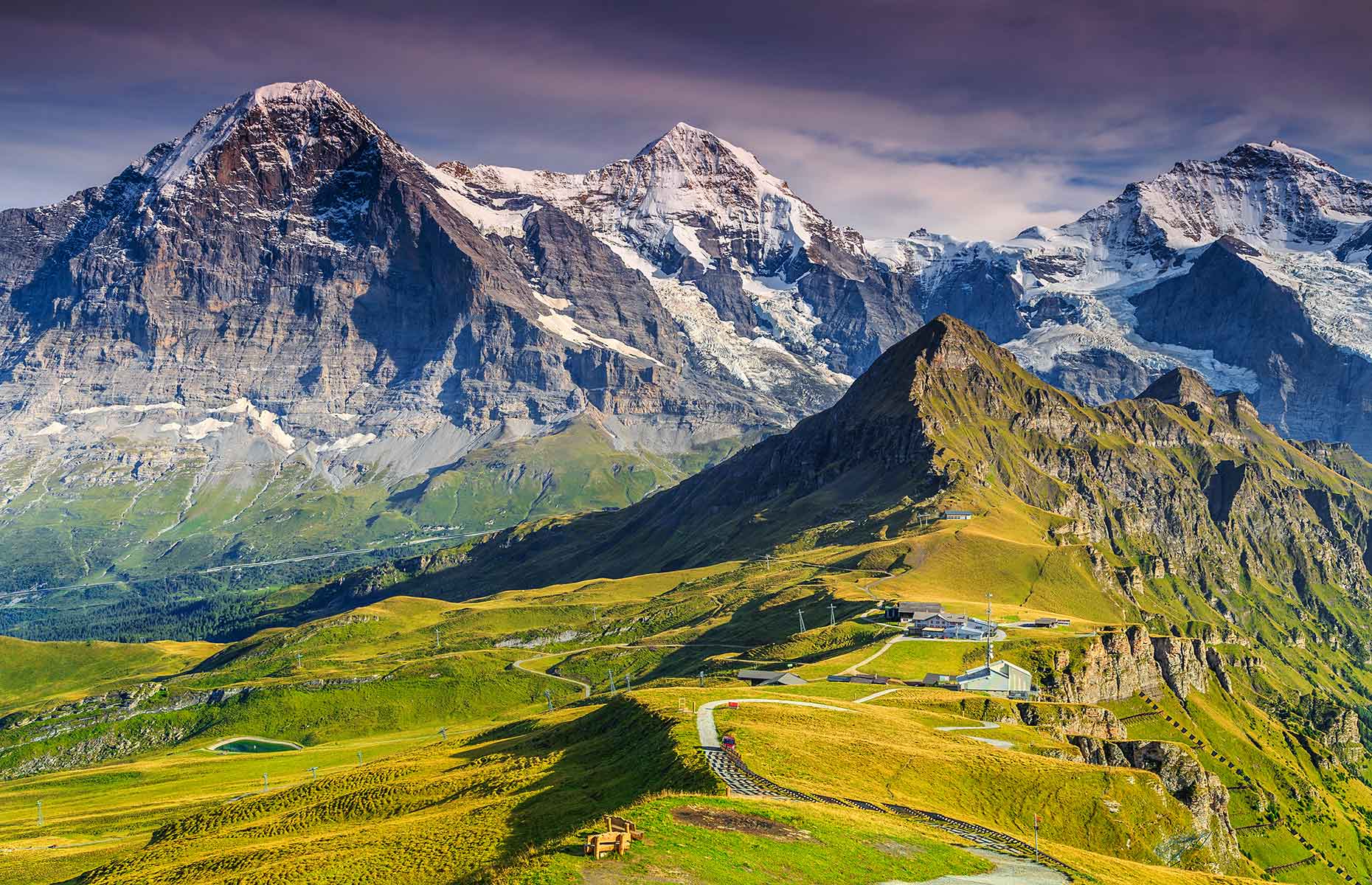 Gaspar Janos/Shutterstock
Gaspar Janos/Shutterstock
Many European ski resorts have gone greener in recent years, but few can rival the Jungfrau Region’s eco credentials. The region is brilliantly connected to the rest of Europe by train, and Swiss Railways (SBB) trains are already 90% fuelled by hydropower. Once you get there, Jungfrau Railways whisks you up to cute, car-free villages and one improbably high summit after the next by train, cable car and funicular. Many lines run on green energy, among them the Eiger Express, which generates power from its wheels and has its own heat recovery system.
The region has made great efforts to reverse erosion caused by downhill skiing by introducing habitat enhancement, rewilding and conservation projects. But that’s just for starters. The bigger picture involves diversification: encouraging visitors to go beyond the pistes and explore in a slower, greener, more responsible way. Read on for our pick of the region’s low-impact adventures.
1. Taking the Eiger Express to Jungfraujoch
With Europe’s highest train station at 11,332 feet (3,454m), Jungfraujoch is way up there on every visitor’s wish list and no wonder. Buffeted by wind, snow and the occasional blizzard, the terrace has top-of-the-world views, taking in the full sweep of the Swiss Alps and peering out across the vast 14-mile (23km) ripple of the Aletsch Glacier, the longest glacier in the Alps. The nearby Ice Palace glitters with sculptures intricately carved out of ice.
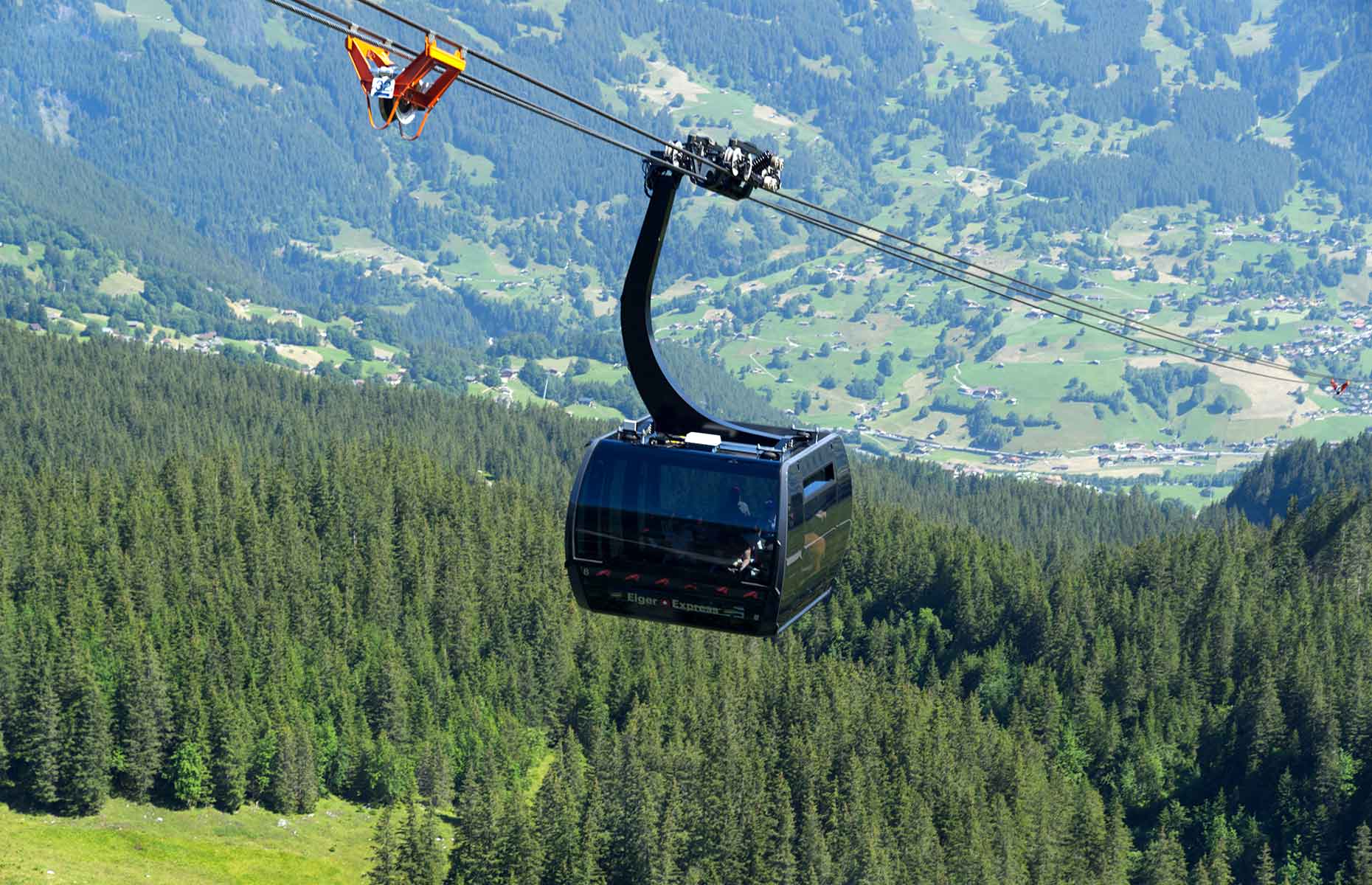 Michael Derrer Fuchs/Shutterstock
Michael Derrer Fuchs/Shutterstock
Reaching Jungfraujoch has been a breeze since the Eiger Express launched in December 2020, significantly slashing the journey time to the top. Beginning in Grindelwald Grund, the tri-cable gondola wings it up to Eiger Glacier in just 15 minutes, gliding above treetops, ice and rock and getting astonishingly close to Eiger’s gnarly North Face. Its energy-saving technology is impressive, but then the railways here have been green from the outset: the Jungfrau Railway has run on hydropower since 1912.
2. Riding a velogemel
Once you’ve ridden a velogemel there’s no looking back. Yes, you’ll feel like a five year-old hopping on a bike for the first time (wobbles are to be expected and bumps and tumbles embraced), but with patience, perseverance and decent balance, you’ll soon get the knack of dashing down the mountain, sending snow flying as you use your heels to brake at speed.
READ MORE: 10 ways to reduce the carbon footprint of your holiday
A mad-looking wooden contraption, the ski-sled-scooter hybrid is the pride and joy of the mountain village of Grindelwald, so much so it has its own World Championships in February. It has done the rounds since 1911 when a carpenter called Christian Bühlmann invented the steerable snow bike as a practical means of zipping around the Alps. Everyone from postmen to schoolteachers once used them.
Rent a velogemel at Kleine Scheidegg and try your luck alongside sledders on the Eiger Run down to Grindelwald or the prettily wooded, mountain-rimmed Fox Run to Wengen. If you choose the latter, stop at Hotel Jungfrau at Wengernalp for proper hot chocolate and homemade cake by the fire.
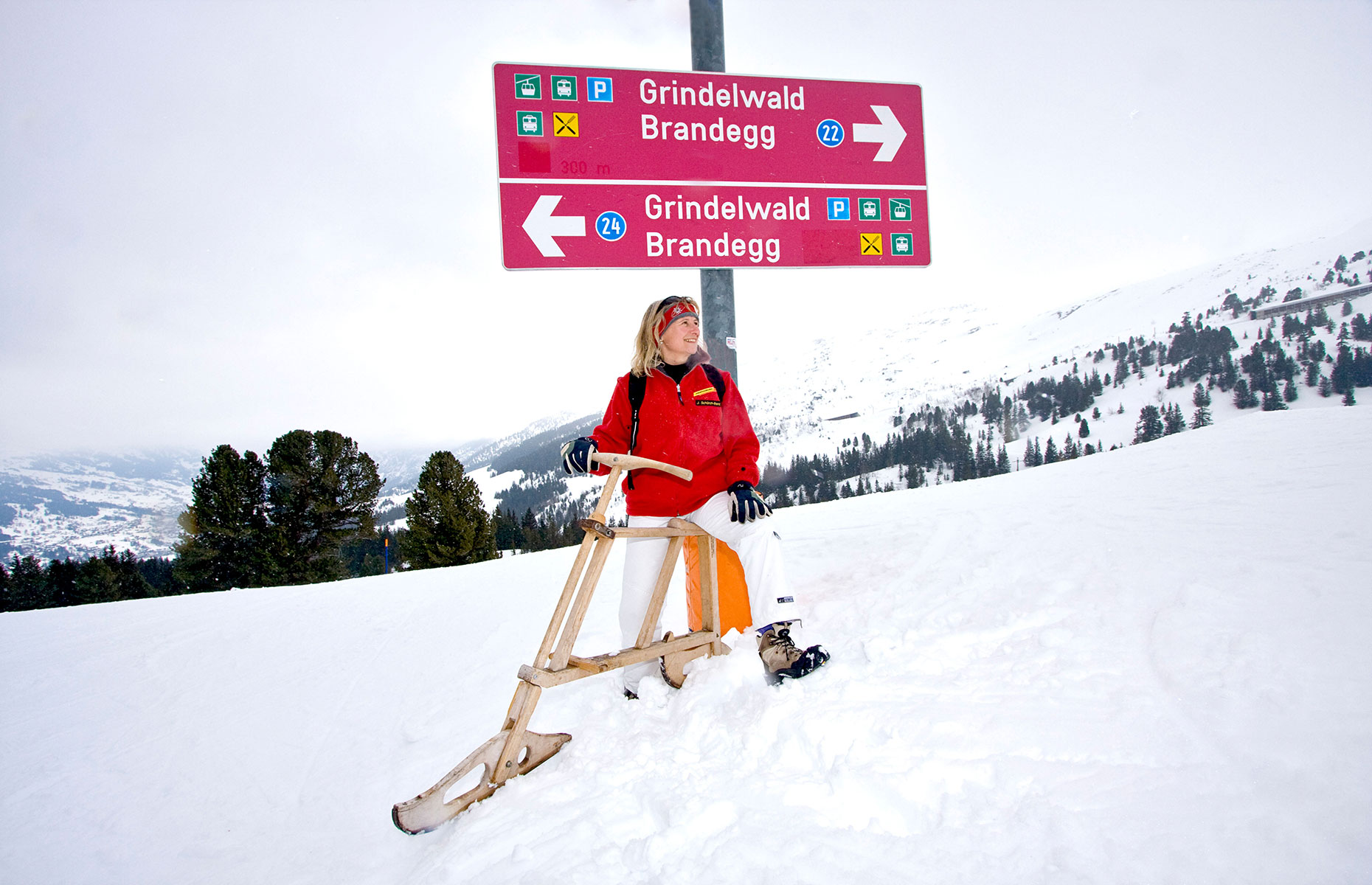 Yvette Cardozo / Alamy Stock Photo
Yvette Cardozo / Alamy Stock Photo
3. Sledding on the world’s longest toboggan run
There are sled runs and then there is ‘Big Pintenfritz’. The world’s longest toboggan run at 9 miles (15km) is a beauty and beast. Why? Because first you have to lug your sled up a mountain for over two hours from First above Grindelwald. But boy is it worth it.
Skirting the shores of the frozen Bachalpsee, climbing up a the snowy saddle, pulling your sledge behind you like in the good old days, gawping in breathless exhilaration as the views of Lake Brienz and the glaciated Bernese Alps open up, and finally arriving at the knobbly peak of 8,796-feet (2,681m) Faulhorn is only half the adventure.
READ MORE: A weekend in Lucerne, Switzerland
The other half is throwing yourself down the mountain with joyous abandon, catapulting around sheer, swooping bends and dipping in and out of the frozen forest. Pause to warm up over rösti and glühwein (mulled wine) at Bergrestaurant Bussalp before racing back down to Grindelwald. You’ll sweat, swear, crash and collide, freeze and fall – but you’ll never forget it.
4. Snowshoeing with Eiger on the horizon
Mürren is quite possibly the Swiss fantasy village of your wildest dreams, with its clifftop location at 5,374 feet (1,638m) above sea level, dress-circle views of Eiger, Mönch and Jungfrau, and log chalets where you just pray for the flakes to fall.
It’s also a terrific launchpad for snowshoeing in the surrounding spruce forests, where you can head off in quiet wonder, making tracks through deep snow with surprising ease. A beautiful slip of a trail threads through the woods up to the nature reserve of Chänelegg and its hilly moorland, tucked under a pristine blanket of snow in winter.
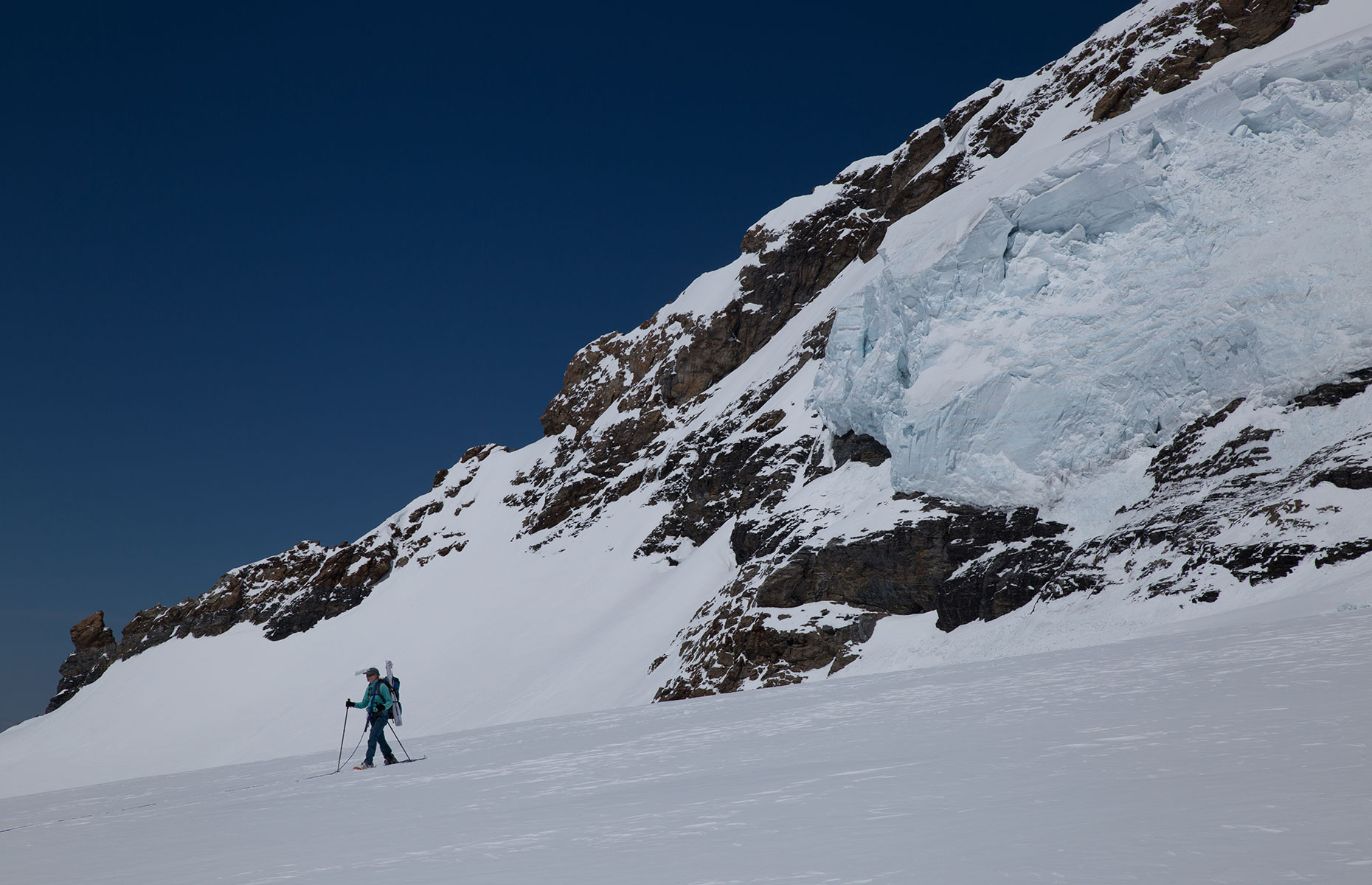 Chris_Hall/Shutterstock
Chris_Hall/Shutterstock
Snowshoes can be rented at Intersport in the village, but for more insight into the area and its wildlife, hook onto a guided two-hour walk with Anita Rossel at Bergfalke Alpine School.
READ MORE: Explore offbeat Basel
5. Doing a Bond at Schilthorn
If you’re a die-hard Bond fan, you’ll remember the George Lazenby ski chase scene in On Her Majesty's Secret Service (1969), filmed at Schilthorn. At 9,744 feet (2,970m), the peak is by no means the region’s highest, but it’s easily one of the most dramatic, with its eyrie-like perch and stirring views of 200 Alpine peaks that roll all the way to France and Germany.
Take the first cable car up to see the sun pinken the summits one by one as you swing precariously close to huge fangs of rock. At the top, you can linger over those same views over brunch at solar-powered revolving restaurant Piz Gloria.
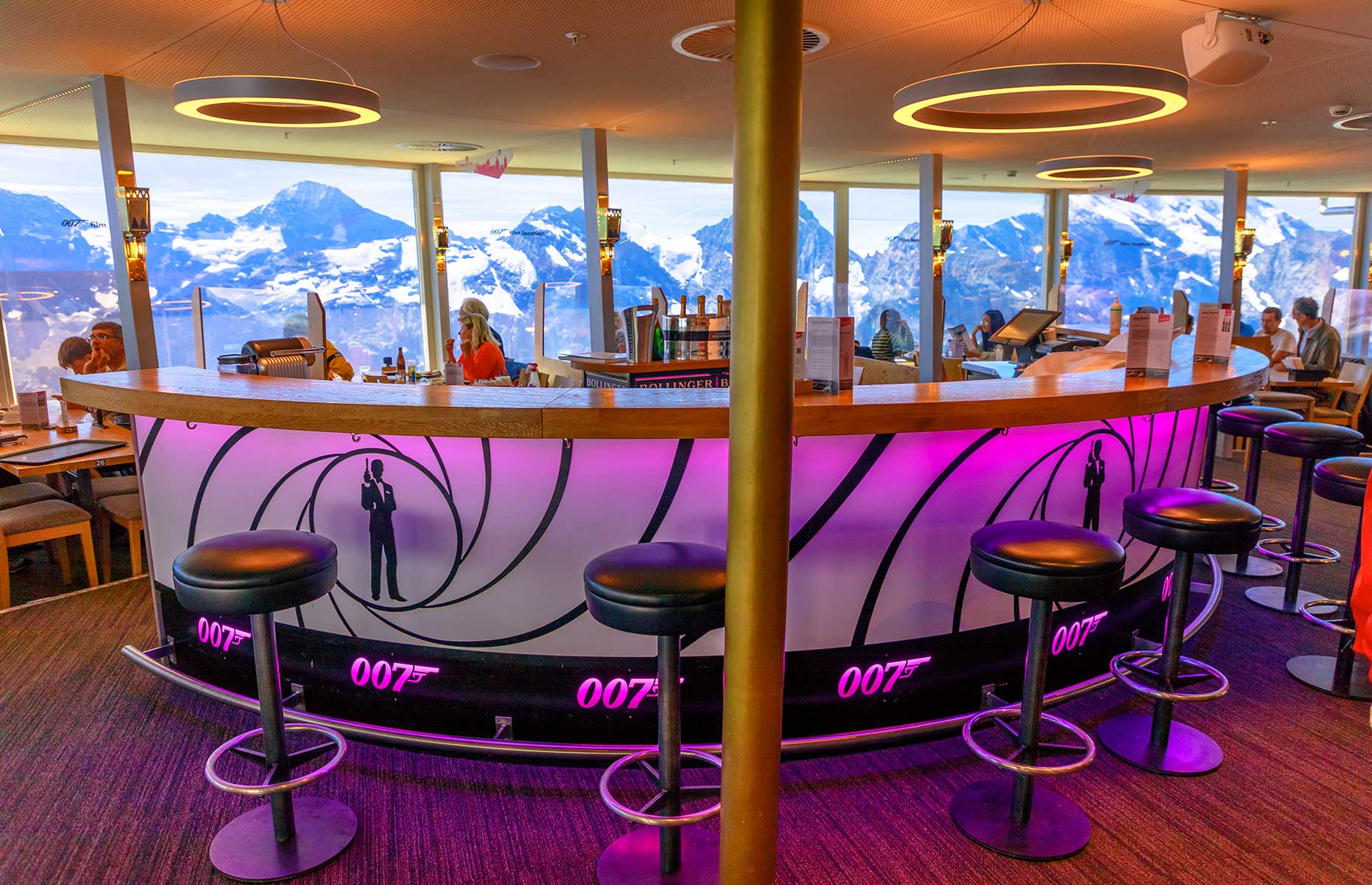 Benny Marty/Shutterstock
Benny Marty/Shutterstock
Schilthorn’s hands-on Bond World museum and 007 Walk of Fame are pure Bond gold. But for more of a buzz still, stop at middle station Birg, where the cliff-hugging Thrill Walk quickens pulses with its peer-into-the-void views and netted tunnel (crawl through it if you dare), dangling precariously above a 829-feet (250m) drop.
READ MORE: More places from James Bond movies you can visit
6. Staying somewhere green
Crisp Alpine-style and warm hospitality nudges Hotel Glacier in Grindelwald ahead of most of the competition. A boutique hotel in the truest sense, the Glacier has a low-key spa and a phenomenal restaurant carving out a reputation for responsible fine dining. The silver-kissed rooms are as cool as the scenery, with top billing going to signature rooms with terrace hot tubs facing Eiger. Green? You bet. Materials are sustainably sourced, energy comes from the nearby biomass plant and the chef takes pride in ultra-local sourcing.
Need to know
Train travel and mountain transport soon add up, so it’s probably worth investing in money-saving passes like the all-in-one Swiss Travel Pass and multi-day Jungfrau Railways passes, some of which include trips to Jungfraujoch.
Lead image: CHEN MIN CHUN/Shutterstock
Comments
Do you want to comment on this article? You need to be signed in for this feature